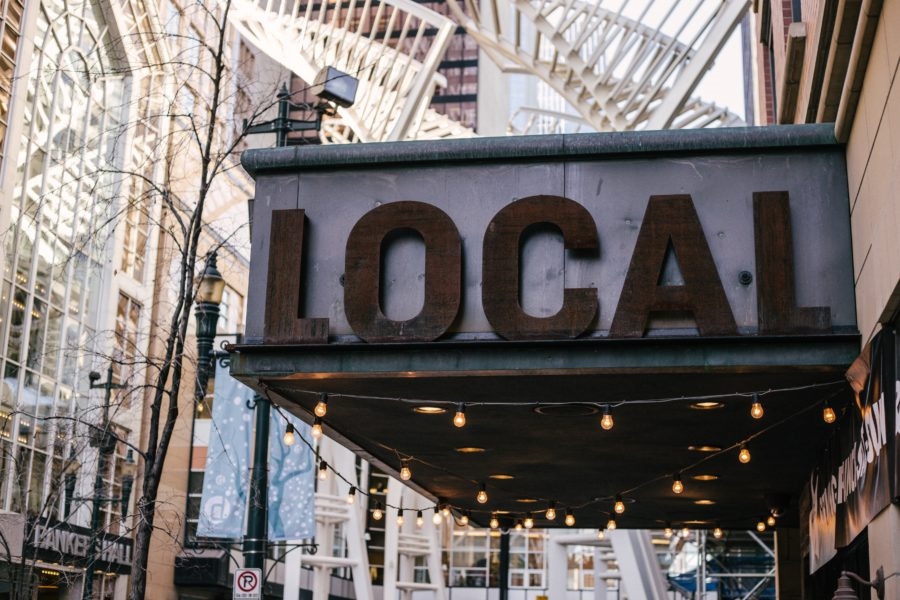— September 12, 2019

Did you know that 72% of people conducting a local search will visit a store within 5 miles
Or maybe that 46% of all searches on Google are local searches.
And that’s just some local SEO statistics.
Point is: local SEO should be a big part of your small business or retail stores marketing plan.
If you are a business serving small regional areas, you need to concentrate on reaching people in these areas. And that’s where local SEO comes in. You should focus your efforts on being a consistent and reliable resource for people in your area, with a website that meets SEO best practices.
If that sounds too complicated, it’s really not. In fact, this article will break down everything you need to do to improve your businesses standing in local search.
In this local SEO checklist, you will learn how to:
- Step Your Site
- Setup Google My Business
- Optimise Your Site
- Build Local Citations
- Create Locally Relevant Content
- Use Social Media & Get Customer Reviews
Step 1: Setup Your Site
The first step is to make sure your website is correctly setup to get indexed by Google and to rank for the keywords you want.
Here’s what you should do to setup your website:
- Make sure to have a well designed homepage as well as a contact and about page.
- Be sure to include your full business name, address and phone number on the contact page.
- And make sure the use of your name, address and phone number (NAP) is consistent across your site, as this will help with your local SEO.
- Go and add a Google Map to the contact page.
- If you have a physical premises, make sure people can easily find your business using a store locator.
- Be sure to use clickable phone numbers on mobile and make sure it is visible across your website.
- Also, make sure your website offers good mobile experience for users.
- Oh, and one more thing, make sure your website loads quickly. No one likes a slow load website, especially potential customers.
Step 2: Setup Google My Business
Google My Business is a free tool to help manage your online presence across Google (both Search and Maps listings). If you operate locally, it is essential to get this setup so customers can find you.
Here’s what you should do to setup your GMB profile:
- If you haven’t already, claim and verify your listing.
- Check for any duplicate listings and make sure these are removed. You just want the one verified listing.
- Add your physical address, local phone number and website URL to your GMB.
- Choose your business type and ensure you select the right categories to show up in.
- Add photos of your business, both outside shots of your premises and inside.
- Include any useful information like disability access, opening hours, parking details etc.
- If you operate multiple locations, be sure to create unique GMB listings for each location.
Step 3: Optimise Your Site
Optimizing your site (also known as on-page SEO) is the practice of tweaking elements on your web pages in order to rank higher and get more relevant traffic in search engines.
Here what you need to do to optimise your site:
- Optimize your meta data to include relevant keywords in the title tag and meta descriptions of each page.
- Put your local keywords in a H1 tag on each page.
- Make sure your URLs are readable by including a descriptive keyword and/or location in them.
- Try to naturally mention your location in the content, whilst making sure it doesn’t sound forced.
- Use compressed images so they load quickly and optimise the ALT text.
- Add Schema markup to your pages so Google can better understand them.
- And just one more time because it is so important for local SEO: make sure to keep the use of your name, address and phone number (NAP) consistent across your website.
Step 4: Build Local Citations
A local citation is any mention of your business across the web, and play big part in local search results. They can include your business name, phone number, address, website address plus other elements relating to your business.
Here’s what you need to know when building local citations:
- You know when I said I wouldn’t mention NAP again? Sorry, here it is. When you build citations, make sure to use the same name, address and phone.
- Get your business listed on local directories, as well as industry related directories.
- Don’t forget to get listed on aggregators like Acxiom, Factual, Infogroup and Localeze.
- It might sound obvious, but be sure to link to the right location page, especially if you have multiple premises.
- If you haven’t already, perform a citation audit to see what you do and don’t have.
- Also, don’t forget to do a competitor analysis to see if there are any missed citations you could get.
Step 5: Create Locally Relevant Content
Locally relevant content helps search engines to gather information from your website so they can provide your site in relevant local results to users.
Here’s how to create local content for your business:
- Create unique content for every page on your website and include the locations you want to rank for. Don’t duplicate any content.
- Avoid thin copy, for example, try to add as much useful information to each page.
- Where possible, be sure to use local keywords and references.
- If you have them, include customer testimonials to help build trust.
- Include local photos and videos where you can.
- If you can, create local landing pages for the different areas you want to show up for in Google.
Step 6: Use Social Media & Get Customer Reviews
Social media and review websites help to give users the information they need to make decisions about future purchases at your business (hopefully).
Here’s how to use social media and get reviews:
- Create social media profiles for your business on all the major platforms.
- Interlink your accounts so people can discover all of your accounts.
- Here’s an obvious one but often overlooked: don’t forget to actually post things.
- When it comes to customer reviews, encourage them to leave them on the relevant platforms
- Encourage customers to leave GMB reviews to help improve your Google Maps listing.
- Encourage third party reviews too so they promote your business.
- Try and respond to all your reviews, both positive and negative ones.
- Put your reviews on your website so potential customers can see them.
Summary
When it comes to improving your business with local SEO, consistency is key.
If you follow the points and best practices detailed in this article, you’ll be well on your way to boosting your local SEO.
Digital & Social Articles on Business 2 Community
(21)








